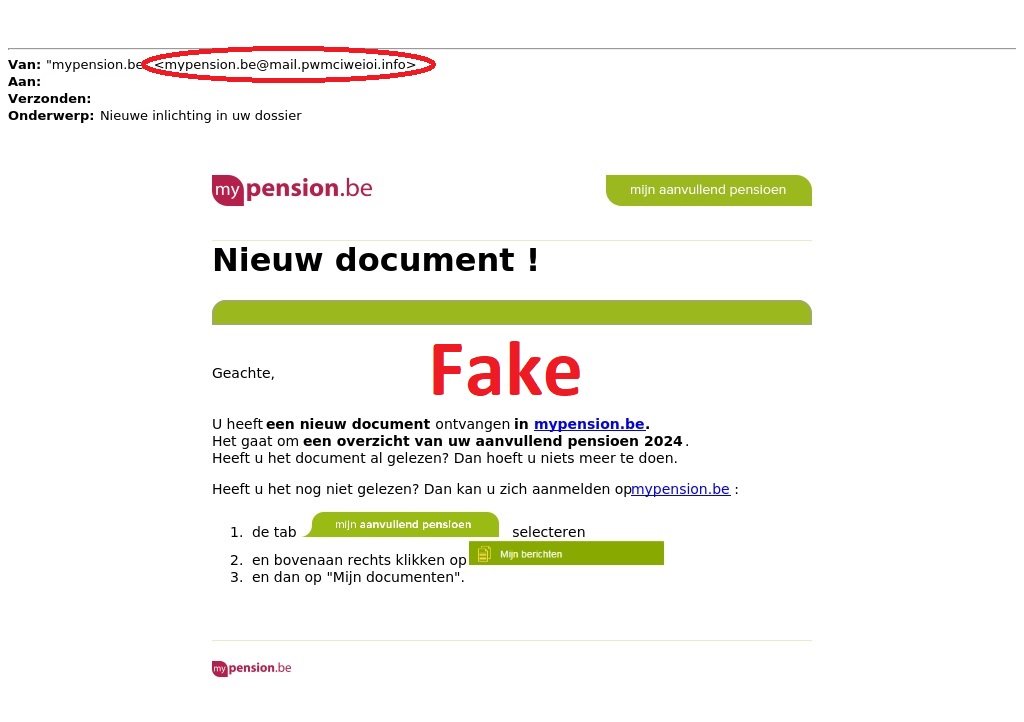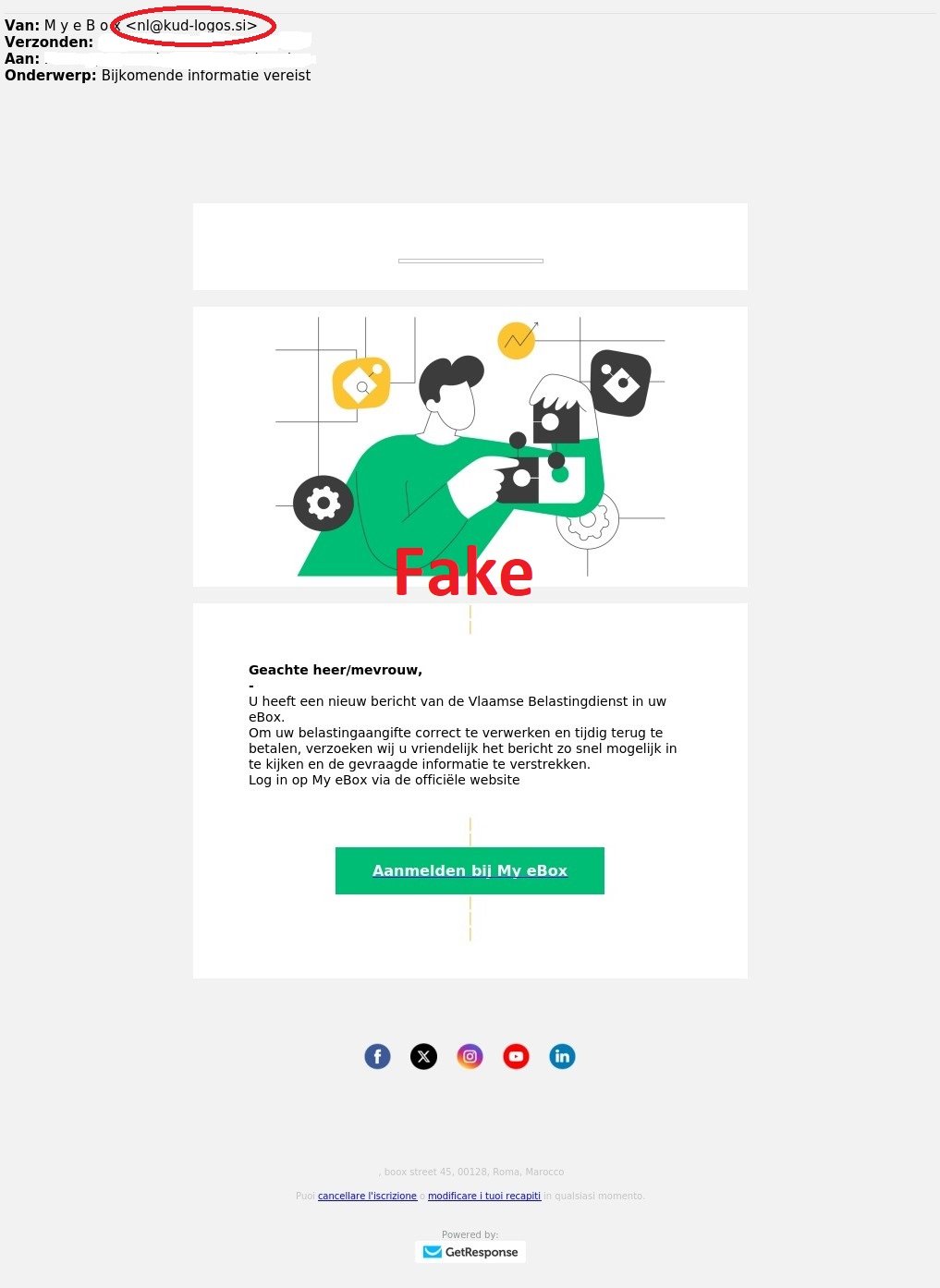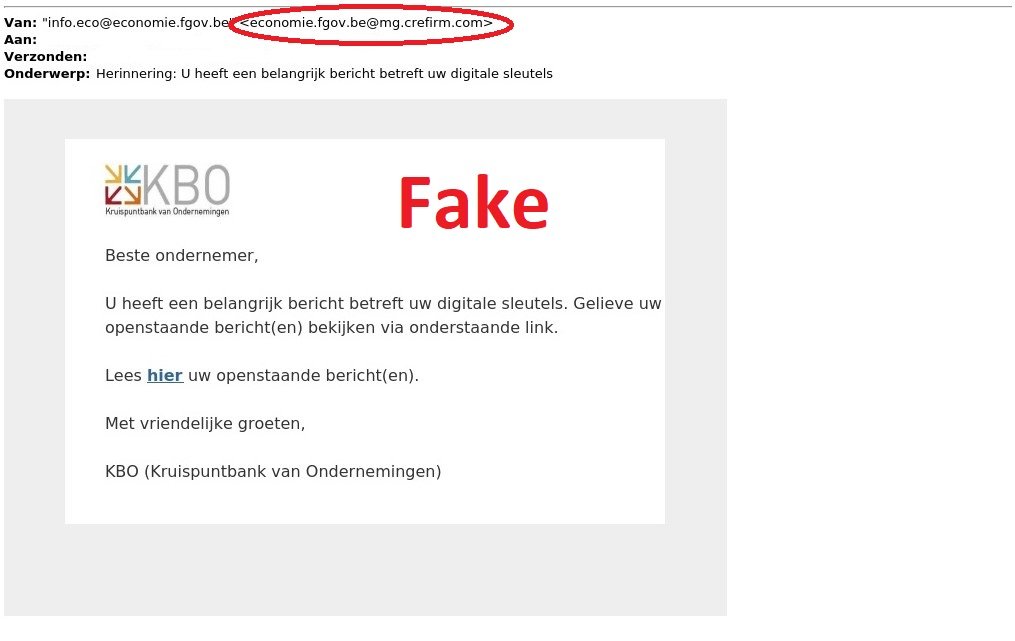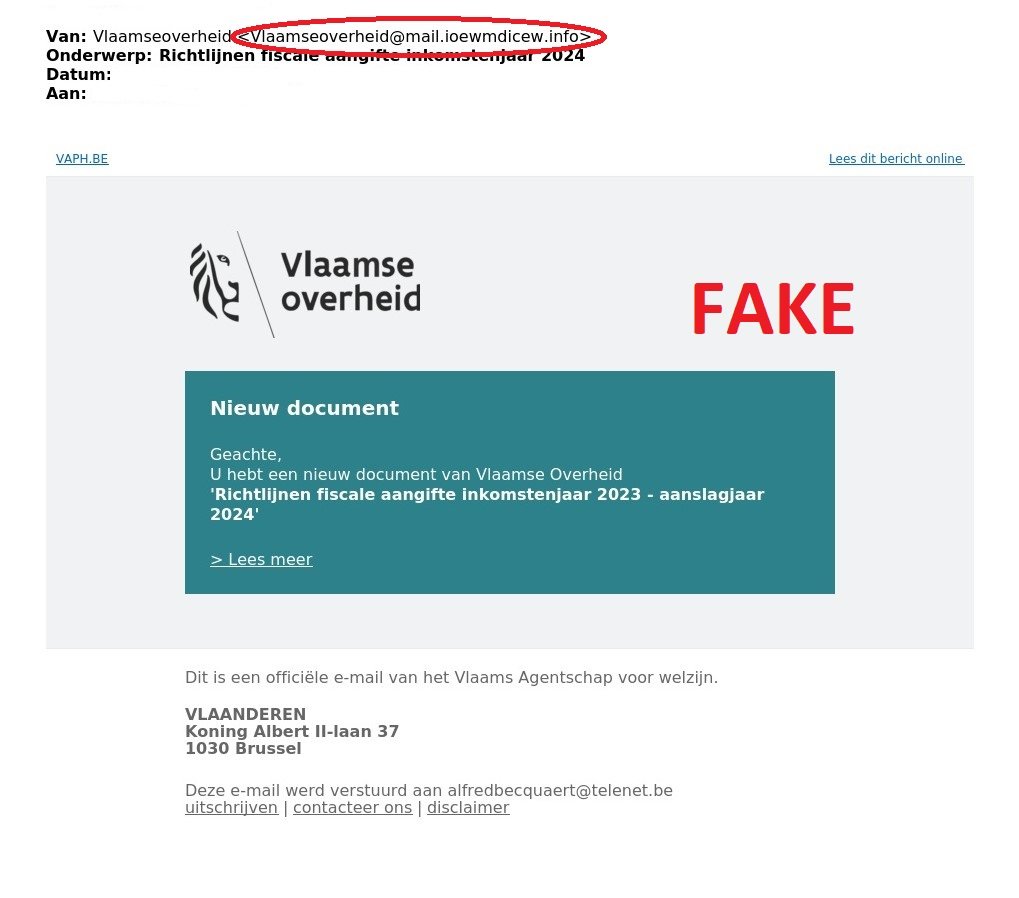Last week we received more than 6,000 phishing messages sent to suspicious@safeonweb.be imitating public services.
Scammers tend to pose as organisations that people know in order to inspire confidence.
Always examine very carefully the URLs to which you are directed and the sender's e-mail address before replying.
In the examples below, you can clearly see that the message has not been sent by the real public service.





- Don't panic and don't click on any links.
- If you have any doubts, contact your bank through official channels.
- Report the scam by forwarding the email to suspicious@safeonweb.be.
- Delete the fraudulent e-mail.
- If you did click, don't fill in the fields any further and abort any interaction.
- NEVER give out personal codes.
- If you have passed on a password that you also use in other places, change it immediately.
- From the moment you lose money or are extorted, we recommend you file a police report. You file a report with the local police in your place of residence.
- Contact your bank and/or Card Stop on 078 170 170 if you have passed on bank details, money disappears from your bank account or you have transferred money to a scammer. That way, any fraudulent transactions can be blocked.
